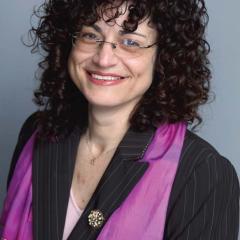
Plant a seed - Secure our Future
“The creation of a thousand forests is in one acorn”
― Ralph Waldo Emerson
“Ha’shkedia porachat, ve’shemesh paz zorachat…The Almond Tree is growing, and the golden sun is glowing…” 1
These words are excerpted from a very old children’s song for Tu B’shevat that every Israeli child knows, about the coming of spring, signified by the almond tree blooming. Now, with English lyrics, many children across the world can sing this song as well.
[Ha’shkediya]
Tu B’shevat, the 15th of the Hebrew month Shevat, is considered a minor holiday, because it is not mentioned in the Jewish Bible. Called Rosh Ha’Shanah La’Ilanot (the New Year of the Trees) (Mishnah Rosh Hashana: 2a), it is celebrated by eating fruits and nuts.
Growing up in the secular Zionist Israel of the 60’s, Tu B’Shevat held a special place in my generation’s hearts. For weeks prior, our teachers would prepare us to perform one of the greatest mitzvot in the relatively new and developing Land of Israel: to plant trees. We were told many stories of the ancient olive and carob trees in our neighborhoods. We studied the names of countless types of trees, each had a purpose and special characteristics, such as the eucalyptus trees that helped dry up the marshes or the old oak trees that provided acorns for coffee and shade for the pioneers laboring in the sun.
Each year we would take fieldtrips to different local areas, to engage in planting. We learned from our teachers that planting trees signified continuity, that we were here to stay in our land for a very long time.
Now listening to very old Israeli folk songs such as “Kach Holchim Ha’shotlim” (Thus Walk the Planters), I remember how we reenacted songs. By holding a spade on our shoulder, wearing shorts, boots, and a funny pointy hat, we pretended to be pioneers on our way to ‘conquer the wilderness’!
“Thus walk the planters, song in heart and spade in hand, from the city and from the village, from the valley, from the mountain on Tu B’shevat….2
[Kach Holchim Ha’shotlim]
Our education about the importance of trees and reviving our land came strictly from a Zionist point of view, and any Biblical reference was “hidden” in folk songs, such as Ki Tavo’u el Ha’aretz (And when you shall come into the land), a Yemenite folk melody with texts from several sources: Leviticus 19:23, Ecclesiastes 3:2-3, Isaiah 61:4 and Psalms 1:2.
“And when you shall come into the land, And have first planted all manner of trees….”
[Ki tavo’u el Ha’aretz]
Today, in Israel as well as here, schools are using Tu B’Shevat to teach about the preservation of our environment. The trees don’t belong to us and thus we have no right to wantonly destroy them. “And these words shall be upon our hearts, and will be taught to our children: “Bal Tashchit!” (You shall not destroy! Deut. 20:19)
Why are trees so respected and why are so many aspects of Judaism associated with trees, including our Torah, which we call the Tree of Life? Simply because, in addition to bestowing their majestic beauty, trees are a source of life.
Across oceans, from Biblical times through generations of Jewish existence, from the present for the sake of our future, the message has always been the same: “Plant a tree to secure the physical continuity of our species. Study Torah and you shall secure our spirit, for our Torah, IS the Tree of Life” 3
[Tree of Life]
1. Lyrics: Yisrael Doshman (1884-1947)/Melody: Menashe Rabina (1899-1968)
2. Lyrics: Yedidya Admon (1894 –1982)/ Melody: Yitzchak Shen’ar (1902 - 1957)
3. Lyrics: Proverbs 3:18/Melody: Richard Silverman
Rabbi Cantor Meeka Simerly was ordained at AJRCA in 2009 as cantor and in 2016 as rabbi. A proud member of ACC since 2011, Meeka has been serving Temple Emanu-El San Jose since 2006. Meeka, her husband Dave and their three Schnauzers live in San Jose, CA.

